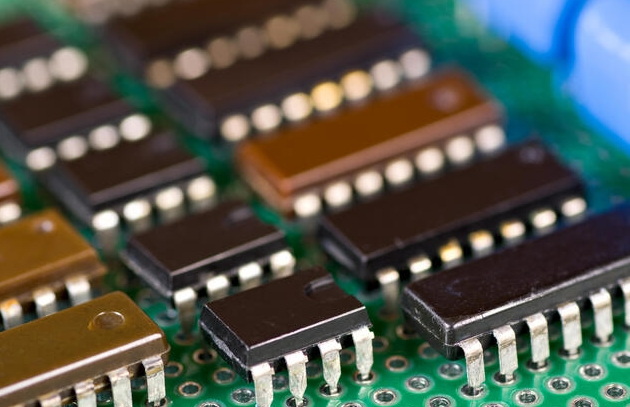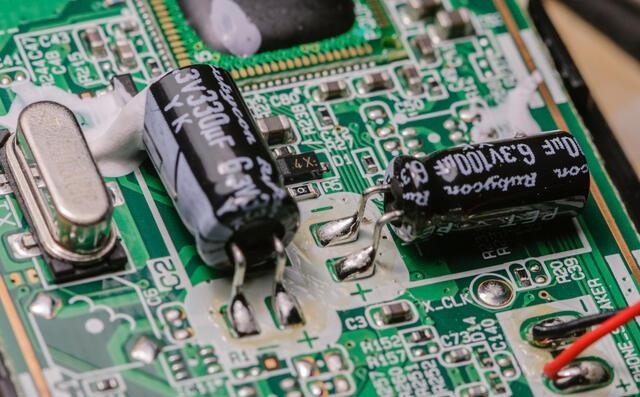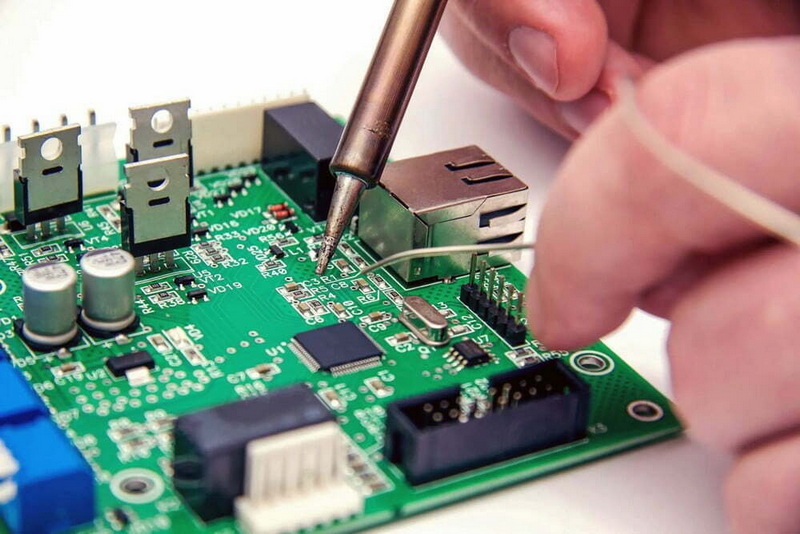Content Menu
● Introduction
● Understanding SMT Components
>> Definition of SMT Components
>> Types of SMT Components
>> Characteristics of SMT Components
● Benefits of Using SMT Components
>> Space Efficiency
>> Improved Performance
>> Cost-Effectiveness
>> Enhanced Reliability
● Applications of SMT Components
>> Consumer Electronics
>> Automotive Industry
>> Telecommunications
>> Medical Devices
● Manufacturing Process of SMT Components
>> Design Phase
>> Solder Paste Application
>> Component Placement
>> Reflow Soldering
>> Inspection and Testing
● Challenges in Using SMT Components
>> Handling Sensitivity
>> Repairability Issues
>> Thermal Management
● Future Trends in SMT Technology
>> Miniaturization
>> Increased Automation
>> Enhanced Materials
>> Sustainability
● Conclusion
● FAQ
>> 1. What is Surface Mount Technology (SMT)?
>> 2. What are some common types of SMT components?
>> 3. What advantages do SMT components have over through-hole components?
>> 4. In which industries are SMT components commonly used?
>> 5. What challenges do manufacturers face when using SMT technology?
Introduction
Surface Mount Technology (SMT) has revolutionized the electronics manufacturing industry by enabling the production of smaller, more efficient, and highly reliable electronic devices. SMT components are integral to this technology, allowing for the miniaturization of electronic circuits and enhancing their performance. In this article, we will explore what SMT components are, their types, benefits, applications, and the manufacturing processes involved. We will also delve into the future of SMT technology and its implications for the electronics industry.

Understanding SMT Components
Definition of SMT Components
SMT components are electronic parts designed to be mounted directly onto the surface of printed circuit boards (PCBs). Unlike traditional through-hole components that require leads to pass through holes in the PCB, SMT components are soldered onto pads on the board's surface. This method of assembly allows for a more compact design and facilitates higher component density on PCBs.
Types of SMT Components
SMT components can be categorized into several types based on their function and design:
- Resistors: These components regulate current flow in a circuit. SMT resistors come in various sizes and values, making them suitable for different applications.
- Capacitors: Used to store electrical energy temporarily, capacitors in SMT form are available in various types such as ceramic, tantalum, and electrolytic.
- Inductors: Inductors store energy in a magnetic field when electrical current flows through them. SMT inductors are essential for filtering and energy storage applications.
- Diodes: These semiconductor devices allow current to flow in one direction only. SMT diodes are commonly used for rectification and signal modulation.
- Transistors: Transistors act as switches or amplifiers in electronic circuits. SMT transistors are critical for modern digital circuits.
- Integrated Circuits (ICs): These are complex assemblies of multiple electronic components integrated into a single package. SMT ICs can perform various functions, from simple logic operations to complex processing tasks.
Characteristics of SMT Components
SMT components possess unique characteristics that make them suitable for modern electronics:
- Small Size: The compact nature of SMT components allows for more efficient use of space on PCBs.
- Lightweight: Their reduced weight contributes to lighter final products.
- High Density: Multiple components can be placed closely together without interference, increasing circuit density.
- Automated Assembly: SMT components can be easily handled by automated pick-and-place machines, streamlining the manufacturing process.
Benefits of Using SMT Components
The adoption of SMT components offers numerous advantages over traditional through-hole technology:
Space Efficiency
One of the most significant benefits of SMT components is their ability to save space on PCBs. This efficiency is crucial in designing compact devices such as smartphones, tablets, and wearables where real estate is limited. With the increasing demand for smaller devices, manufacturers are constantly looking for ways to optimize PCB layouts by utilizing SMT technology.
Improved Performance
SMT components typically have shorter lead lengths compared to through-hole parts. This reduction minimizes inductance and resistance, leading to better electrical performance and faster signal transmission. The enhanced performance is particularly important in high-frequency applications where signal integrity is critical.
Cost-Effectiveness
Although the initial investment in SMT technology may be higher due to the need for specialized equipment, the overall cost savings during production often outweigh these expenses. The ability to automate assembly processes reduces labor costs and increases throughput. Additionally, the reduced size and weight of products can lead to lower shipping costs and improved inventory management.

Enhanced Reliability
SMT components are generally more reliable than their through-hole counterparts due to their lower profile and better solder joint integrity. They are less susceptible to mechanical stress and vibration, making them ideal for applications in harsh environments. This reliability is essential in industries such as automotive and aerospace where failure can have serious consequences.
Applications of SMT Components
SMT technology is widely used across various industries due to its versatility:
Consumer Electronics
In consumer electronics, such as smartphones, laptops, and televisions, SMT components enable compact designs while maintaining high functionality. The demand for smaller devices drives innovation in this sector. Manufacturers continuously seek ways to integrate more features into smaller packages without compromising performance.
Automotive Industry
The automotive industry relies heavily on SMT technology for electronic control units (ECUs), sensors, and infotainment systems. The durability and reliability of SMT components make them suitable for automotive applications that require long-term performance under challenging conditions. As vehicles become increasingly reliant on electronics for safety features and connectivity, the importance of SMT technology continues to grow.
Telecommunications
Telecommunication devices utilize SMT components for signal processing and transmission. The need for high-speed data transfer has led to the widespread adoption of these technologies in networking equipment. With the rise of 5G technology, there is an even greater emphasis on developing compact yet powerful devices that can handle increased data loads efficiently.
Medical Devices
In medical applications, such as diagnostic equipment and monitoring devices, reliability is paramount. SMT components help create compact and efficient medical devices that can operate accurately over extended periods. The miniaturization enabled by SMT allows for portable medical devices that improve patient care by facilitating remote monitoring and diagnostics.
Manufacturing Process of SMT Components
The manufacturing process for SMT components involves several key steps:
Design Phase
The first step is designing the PCB layout using specialized software that considers the placement of each component. Designers must ensure that the layout optimizes space while maintaining electrical performance. This phase often involves simulations to predict how the circuit will behave under different conditions.
Solder Paste Application
Solder paste is applied to the PCB pads using a stencil or screen printing method. This paste consists of tiny solder particles mixed with flux to facilitate soldering during assembly. Proper application is crucial; too much or too little paste can lead to defects during soldering.
Component Placement
Automated pick-and-place machines accurately position each SMT component onto the solder paste-covered pads on the PCB. This step requires precision to ensure proper alignment. Advanced machines can place thousands of components per hour with high accuracy, significantly speeding up production times.
Reflow Soldering
Once all components are placed, the PCB undergoes reflow soldering. The assembly passes through an oven where heat melts the solder paste, creating strong electrical connections between the components and the PCB pads. This process must be carefully controlled; improper temperatures can lead to cold solder joints or damage sensitive components.
Inspection and Testing
After soldering, PCBs undergo inspection using automated optical inspection (AOI) systems or X-ray machines to detect defects or misalignments. Functional testing follows to ensure each device operates correctly before packaging. Quality control at this stage is vital; any defects must be identified early to avoid costly rework later in the production process.
Challenges in Using SMT Components
Despite their advantages, there are challenges associated with using SMT components:
Handling Sensitivity
SMT components can be sensitive to electrostatic discharge (ESD), requiring manufacturers to implement strict handling procedures to prevent damage during assembly. Personnel must use ESD-safe equipment and wear appropriate clothing when working with sensitive parts.
Repairability Issues
Repairing or replacing faulty SMT components can be more challenging than with through-hole parts due to their small size and placement on densely populated boards. Specialized tools may be required for desoldering and resoldering components without damaging surrounding parts or traces on the PCB.
Thermal Management
As devices become more compact, managing heat dissipation becomes critical. Designers must carefully consider thermal management solutions when integrating multiple high-power SMT components into a single PCB design. Techniques such as heat sinks or thermal vias may be employed to enhance heat dissipation and maintain optimal operating temperatures.
Future Trends in SMT Technology
As technology continues to evolve rapidly, several trends are shaping the future landscape of SMT:
Miniaturization
The push towards smaller electronic devices will continue driving innovation in component design and manufacturing processes. New materials and techniques will enable even smaller component sizes without sacrificing performance or reliability.
Increased Automation
Automation will play an increasingly significant role in manufacturing processes as companies seek greater efficiency and reduced labor costs. Advanced robotics will enhance precision assembly while minimizing human error during production.
Enhanced Materials
Research into new materials will lead to improved performance characteristics for SMT components—such as better thermal conductivity or lower resistance—allowing manufacturers to create even more efficient designs tailored for specific applications.
Sustainability
With growing concerns about environmental impact, manufacturers will focus on sustainable practices within electronics production processes—such as reducing waste or utilizing recyclable materials—to meet regulatory requirements while appealing to environmentally conscious consumers.
Conclusion
In summary, Surface Mount Technology has transformed electronics manufacturing by enabling smaller, lighter, and more efficient devices through the use of SMT components. Their compact size, high density, cost-effectiveness, and reliability make them indispensable across various industries including consumer electronics, automotive applications, telecommunications, and medical devices. While there are challenges associated with their use—such as handling sensitivity and thermal management—advancements in technology continue to address these issues effectively. As demand for smaller electronic devices grows alongside technological advancements like 5G connectivity or IoT integration; understanding how best utilize these innovative solutions becomes increasingly important within future designs—and ultimately shapes our world today!

FAQ
1. What is Surface Mount Technology (SMT)?
Surface Mount Technology (SMT) is a method used in electronics manufacturing where components are mounted directly onto the surface of printed circuit boards (PCBs) rather than being inserted into holes drilled into them.
2. What are some common types of SMT components?
Common types of SMT components include resistors, capacitors, inductors, diodes, transistors, and integrated circuits (ICs).
3. What advantages do SMT components have over through-hole components?
SMT components offer several advantages such as space efficiency due to their small size; improved performance with shorter lead lengths; cost-effectiveness through automated assembly processes; enhanced reliability under mechanical stress; thus making them ideal choices across various applications!
4. In which industries are SMT components commonly used?
SMT components are widely used in industries such as consumer electronics (smartphones & laptops), automotive (electronic control units), telecommunications (networking equipment), medical devices (diagnostic tools), etc., showcasing their versatility across diverse sectors!
5. What challenges do manufacturers face when using SMT technology?
Manufacturers face challenges such as handling sensitivity due to electrostatic discharge (ESD); difficulties repairing small-sized parts densely populated boards; managing thermal dissipation effectively within compact designs—all requiring careful consideration throughout production processes!




















